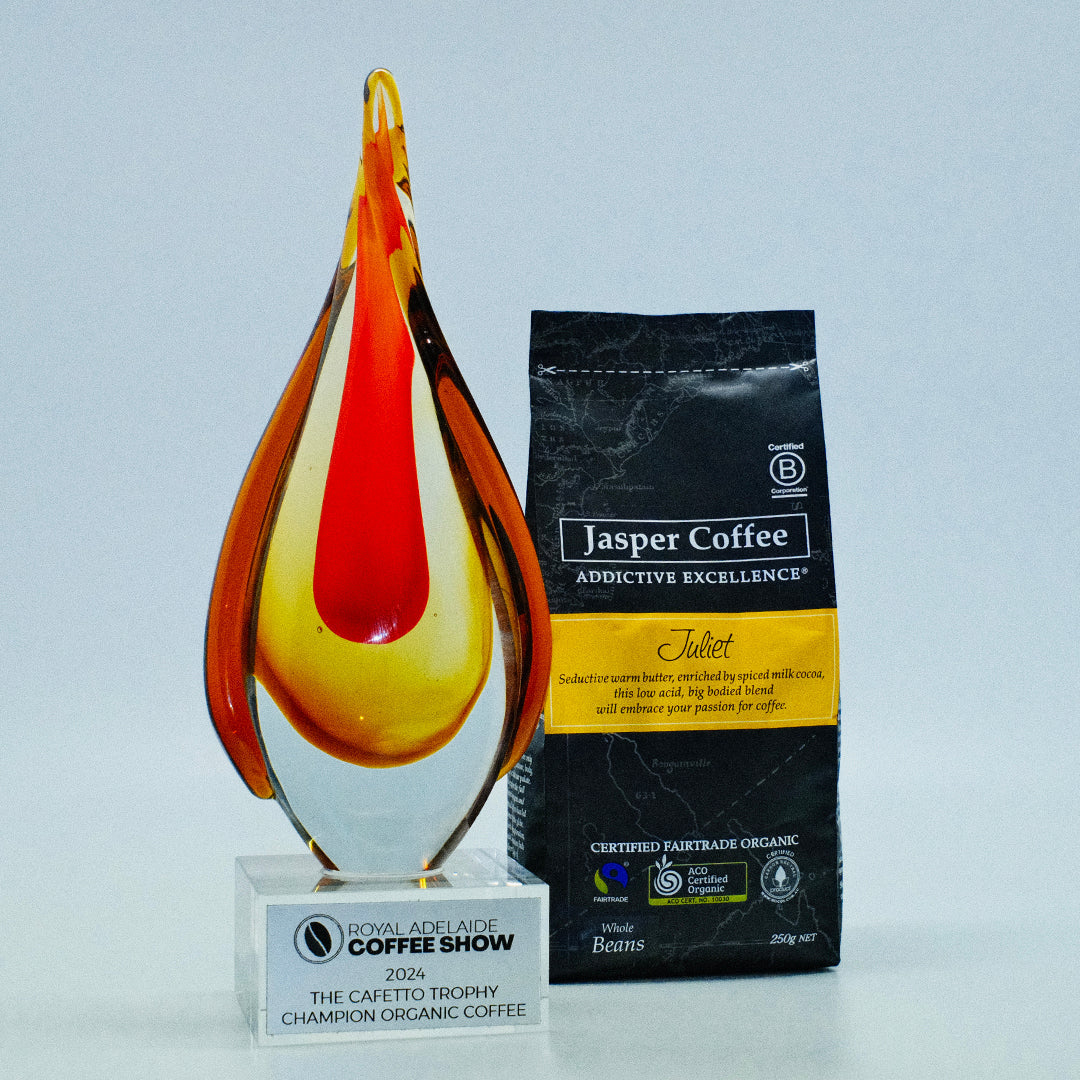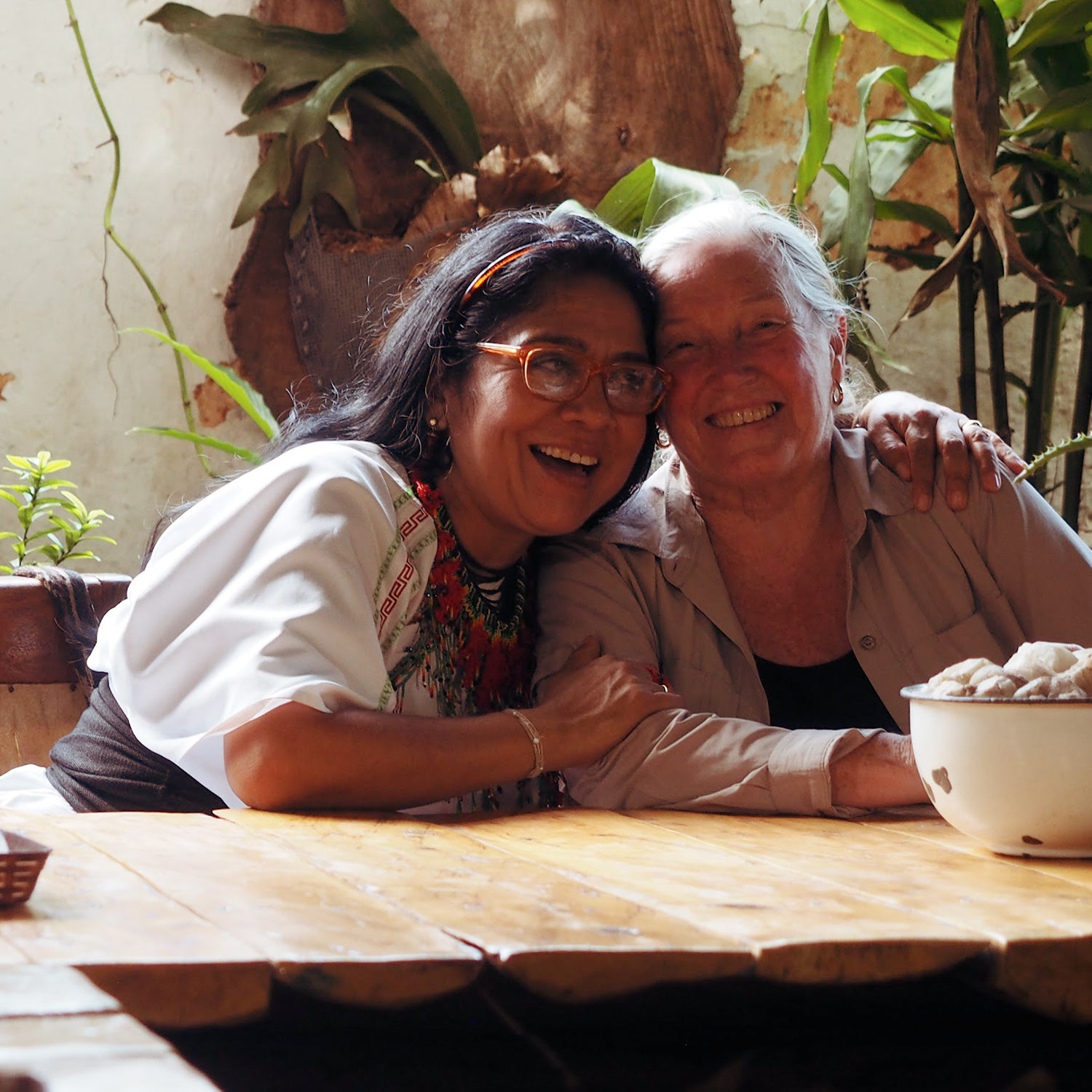You’ve probably noticed your flat white is now heading up towards $6 or $7. That 250g bag you love is edging toward $22-$25. Some cafés are even suggesting $10 or $12 cups may be on the menu soon. Yikes!
On the surface, rising prices may sound like bad news. At Jasper Coffee we see something more hopeful. This is a moment of recalibration. Coffee is entering a phase where farmers are increasingly supported, businesses invest with integrity, and every cup tells a richer story.
We know that quality starts at the farm, and that coffee will only survive and thrive if the growers behind it are respected, paid fairly, and equipped to adapt.
What's happening at a glance:

First off, what is the C Price?
The global C price (often written as "C price" or "Coffee C price") is the benchmark price for Arabica coffee traded on the Intercontinental Exchange (ICE) in New York. It’s the world’s reference point for the commodity price of unroasted (green) Arabica beans and plays a central role in how coffee is bought, sold, and priced globally.
Why does the C Price matter?
- It acts as a base price for much of the global coffee trade. Many private or specialty coffee contracts (including Fairtrade or Organic) peg their pricing to the C price, then add a differential (based on origin, quality, certifications, etc).
The C Price has been rising sharply over the past year, hitting some extreme highs. Causing the coffee market to go a bit wild.

Vietnam Is Facing Shifts in Production
Vietnam, the world’s second-largest coffee producer, has seen important changes over the past decade. Production has plateaued at just under 29 million bags, with estimated output around 27.85 million bags of Robusta and 1.15 million bags of Arabica in the 2024–25 season (USDA via GAIN, Daily Coffee News). Yields have slipped slightly to around 2.73 tonnes per hectare. Farmers are turning to intercropping and diversifying to withstand market dips (Daily Coffee News).
Despite record-high prices, Robusta yields fell by about 10 percent in 2023–24 due to delayed harvests, climate variability, and crop shifting toward higher-value products like durian (Koltiva, Savor Brands). Export volumes dropped nearly 12 percent while value climbed nearly 40 percent in early 2024 (Coffee Geography, General Dept Vietnam Customs).
Vietnam’s domestic consumption is also growing fast, with nearly 3.6 million bags used internally in 2024–25 (GAIN report). Local demand is placing additional pressure on supply.
Scott Bennett of HA Bennetts points to Vietnam’s stagnating output as a cautionary tale. Many trees planted decades ago with World Bank support are reaching the end of their productive life. Without higher prices, he warns, producers won’t replace them — they’ll rip them out and switch to crops like sugarcane or bananas, which are easier and more profitable. “If a coffee tree is removed from the ground in a producing country, it’s very rare that it goes back in,” he says (BeanScene).
Climate Change Is Reshaping the Coffee Landscape
Arabica is sensitive. It thrives at high altitudes, in cool and stable microclimates. As global temperatures rise, those ideal growing zones are shifting higher—into forest edges, erosion-prone slopes, or places already under pressure.
One thing that stood out from a recent Fairtrade article:
"Coffee farms within the ‘bean belt’ are biodiversity hotspots, but by 2050, between 30% and 60% of current coffee-growing land is expected to become unsuitable for cultivation. Farmers also face rising threats from pests, diseases such as coffee leaf rust, and extreme weather events, all of which jeopardise their livelihoods."
This is affecting regions like Colombia, Ethiopia, and Guatemala, to name a few. (NOAA, Conservation International).
Brazil’s Yield Challenges and Climate Pressures
Brazil remains the world’s top coffee producer and a key national consumer, but it faced climate-related production struggles last year. Droughts, frosts and wildfires reduced the 2024 crop to about 54.8 million 60 kg bags. This was a 0.5 percent drop from the previous year (Tea & Coffee Trade Journal). Some regions lost up to two thirds of their harvest due to extreme heat and drought events (Washington Post). Although the 2025–26 volume may increase slightly, it will likely remain below peak levels due to long-term weather shifts (Global Coffee Report).
In response, more Brazilian farmers are turning to irrigation or planting Robusta as a buffer against future drought.
Coffee growers in the Cerrado Mineiro region are beginning to plant Robusta hybrids, more resistant to drought and heat — a necessary step as climate change continues to alter growing conditions. Across Latin America and Africa, producers are reinvesting in infrastructure, new varietals, and long-overdue farm upgrades.
 Yes, Farmers Are Earning More, But It's Not That Simple
Yes, Farmers Are Earning More, But It's Not That Simple
The global price for Arabica has topped US $4.40 per pound, a 50 percent jump compared to last year (Trading Economics). For some farmers, especially in India’s Karnataka region, this means new irrigation, debt repayment and long-awaited improvements (Times of India).
At the same time, Fairtrade ANZ has raised its minimum prices and organic premiums (Fairtrade ANZ Q&A). Since 2017, over €400 million in Fairtrade premiums has reached farming communities.(Fairtrade ANZ Annual Report 2023).
But not every grower shares in those gains. Between rising fertiliser costs, climate volatility, and volatile freight markets, many producers still struggle to get ahead (Fairtrade ANZ).
Often these increases in prices are just helping them stay afloat due to increased farming costs. Additionally, due to climate change in some cases growers are seeing lower yields, so while they may get a better price, they do not have as much coffee to sell.
As green coffee veteran (and friend of Jasper Coffee) Scott Bennett explains, if growers can’t earn a sustainable living, replanting won’t happen. And when a tree is pulled up, it’s rarely replaced with coffee (BeanScene).
Why This Matters for Jasper Coffee and for You
We do not directly buy coffee from producers, while we have relationships with many coffee growers, our supply chain goes through coffee brokers who help mitigate risk and organise importing of coffee to Australia. We've built strong, long-standing relationships with some of the coffee growers who's beans we sell. Some of these relationships span decades. We work closely with Fairtrade, Organic and Shade-Grown growers who know their land and care about the long-term future of coffee.
Our sourcing reflects these relationships and the current global landscape. When green bean prices rise, we ensure that our growers are supported with stability, infrastructure investment and long-term planning.

Why Our Prices Are Changing
We’re making a small change to our coffee bean and cup coffee prices in store and online. It’s all part of continuing to do what we’ve always done… pay fairly, roast beautifully, and serve coffee that makes a tangible difference.
As the world of coffee evolves, so does the cost of doing things the right way. From supporting growers with better tools and fairer incomes, to ensuring our team here in Australia is looked after, every step adds to the bigger picture of sustainability and care.
What is changing?
As of the 1st of July 2025:
- We are increasing prices on our coffee bean range.
- We are increasing cup coffee prices in our stores.
- We’ve worked hard to keep price changes minimal and ensure that our coffee remains high-quality, affordable and aligned with our values.
Coffee pricing is a complex topic. There’s a lot going on beneath the surface. But we hope this post has helped shed light on why these changes matter, and how they’re shaping the future of coffee for the better.
Thank you.
We’ve done our best to keep changes minimal while staying true to our values. Your choice to drink Jasper Coffee helps shape a better future for coffee farmers, for the planet, and for every cup to come
Jasper Parker Trenfield.













